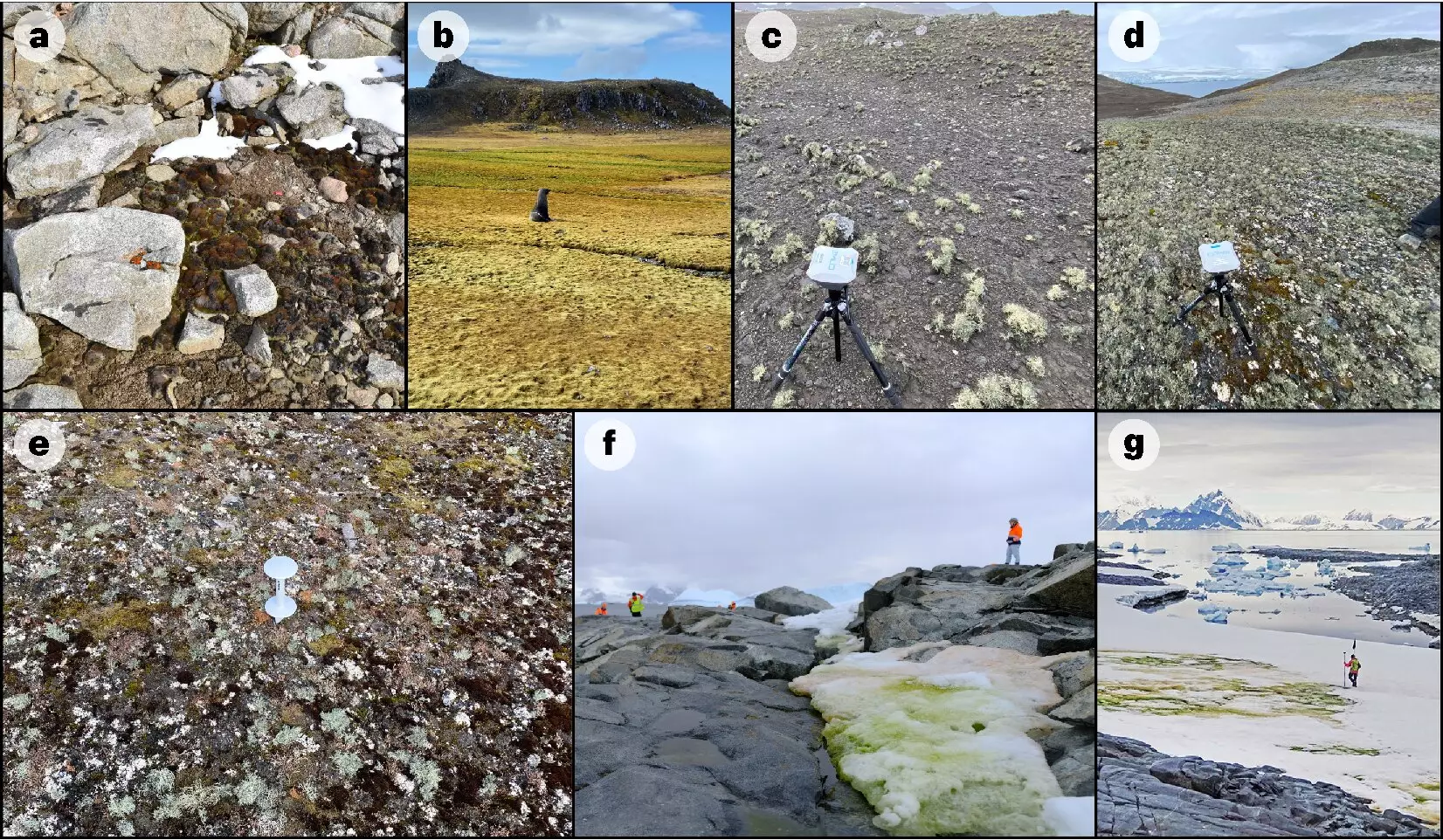The recent comprehensive mapping study of plant life across Antarctica stands as a significant scientific milestone, revealing areas of ecological growth previously obscured from our understanding. This monumental research, highlighted in the esteemed journal Nature Geoscience, focuses on conducting a thorough satellite survey of mosses, lichens, and algae, setting the stage for a deeper understanding of how these vital organisms interact with their environment and respond to climatic shifts.
The initial findings from this research are striking: approximately 45 square kilometers of vegetation were identified, an area roughly three times larger than England’s Lake Windermere. Conducted by a collaborative international team comprised of researchers from the University of Edinburgh, the Norwegian Institute for Nature Research, the British Antarctic Survey, and the Scottish Association for Marine Science, this mapping effort marks a new chapter in ecological awareness regarding one of the planet’s most extreme frontiers.
The research team harnessed advanced satellite technology provided by the European Space Agency, complemented by ground-based measurements collected over several summer seasons. This combination of remote sensing and direct observation has provided a baseline measure of the Antarctic vegetation, a necessary step to effectively monitor and assess changes related to climate variability. By focusing on the vegetation predominantly located in the Antarctic Peninsula and its surrounding islands, the researchers highlighted that over 80% of recorded plant life remains concentrated in this region, illustrating the unique ecological niches that exist within these harsh environments.
Despite the significance of this growth, the team noted that it represents a mere 0.12% of the overall ice-free area of the continent. This minuscule percentage emphasizes the critical need for strategic conservation efforts to protect these emerging areas, particularly given the inadequacies of the existing Antarctic Specially Protected Area (ASPA) framework. A more profound understanding of these vegetation zones could serve as a crucial guide in the formulation of enhanced protective measures.
Antarctic vegetation is an extraordinary testament to nature’s resilience. Predominantly composed of hardy mosses and lichens, these organisms have adapted to endure one of Earth’s harshest climates. Their significance extends beyond mere survival; they play essential roles in local carbon and nutrient cycling. With this newly acquired knowledge — maps showcasing their coverage and abundance — researchers can better grasp the factors governing their distribution.
Antarctica’s unique environmental conditions, characterized by extreme cold and limited sunlight, make its flora sensitive indicators of ecological change. Previous studies suggest that the adaptability of these vegetative species positions them as barometers for detecting broader climatic shifts not only in Antarctica but across the globe’s most vulnerable ecosystems, including the Arctic region. Monitoring their development offers crucial insights into potential responses of similar flora to changing climate patterns.
The insights gleaned from this extensive mapping study carry significant implications for future conservation initiatives. As ecologist Charlotte Walshaw aptly noted, “Our continent-scale map provides key information on vegetation presence in areas that are rarely visited by people.” This perspective underscores how enhanced understanding of Antarctica’s vegetation distribution can inform protective strategies designed to sustain its intrinsic ecological value.
Dr. Claudia Colesie emphasizes the need for targeted conservation actions, stating, “Now that we know where to look for them, we can provide more targeted conservation measures to safeguard their future.” This newfound knowledge is pivotal in planning conservation efforts that not only shield these delicate ecosystems but also ensure their resilience against the continuing threats posed by climate change.
This pioneering research opens up a crucial dialogue about the significance of the Antarctic flora, advocating for increased awareness and protection of these important ecosystems. As our planet continues to grapple with the impacts of climate change, such studies serve as vital resources—illuminating paths toward effective conservation strategies in one of the planet’s most frigid yet fascinating landscapes.


Leave a Reply